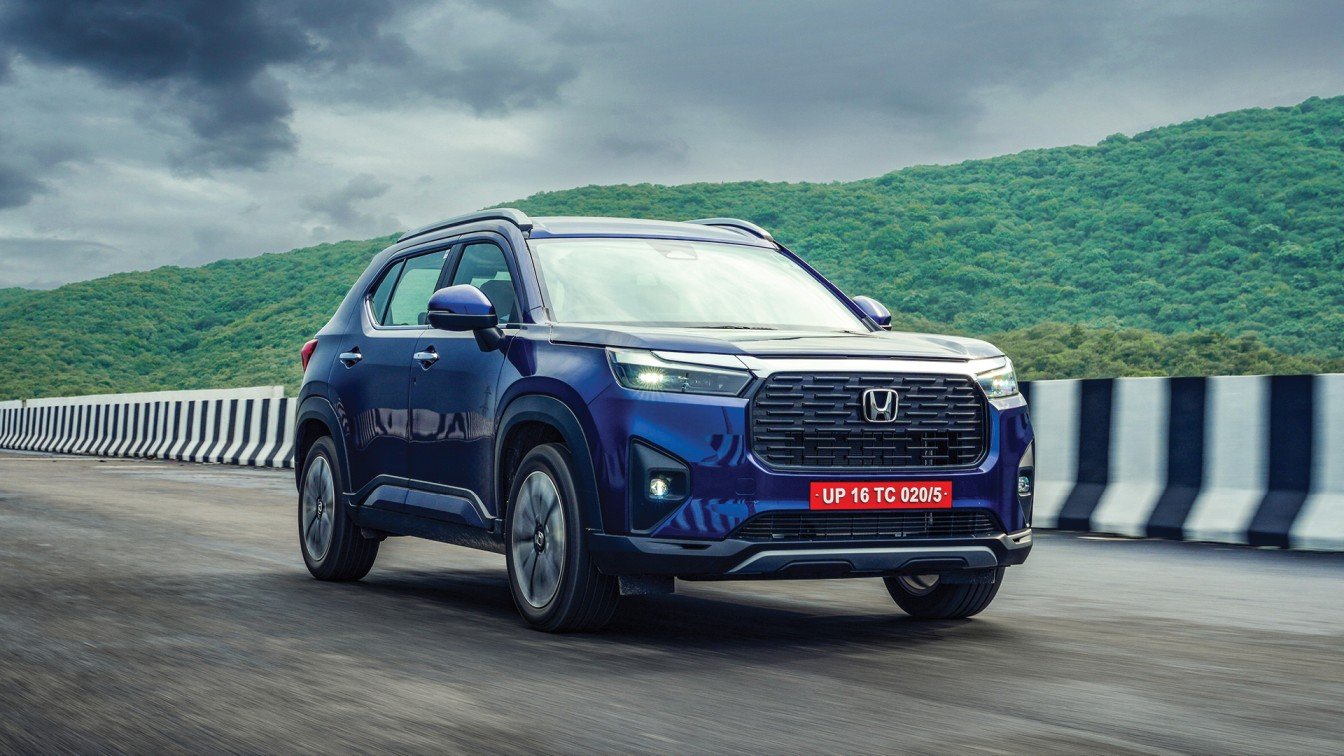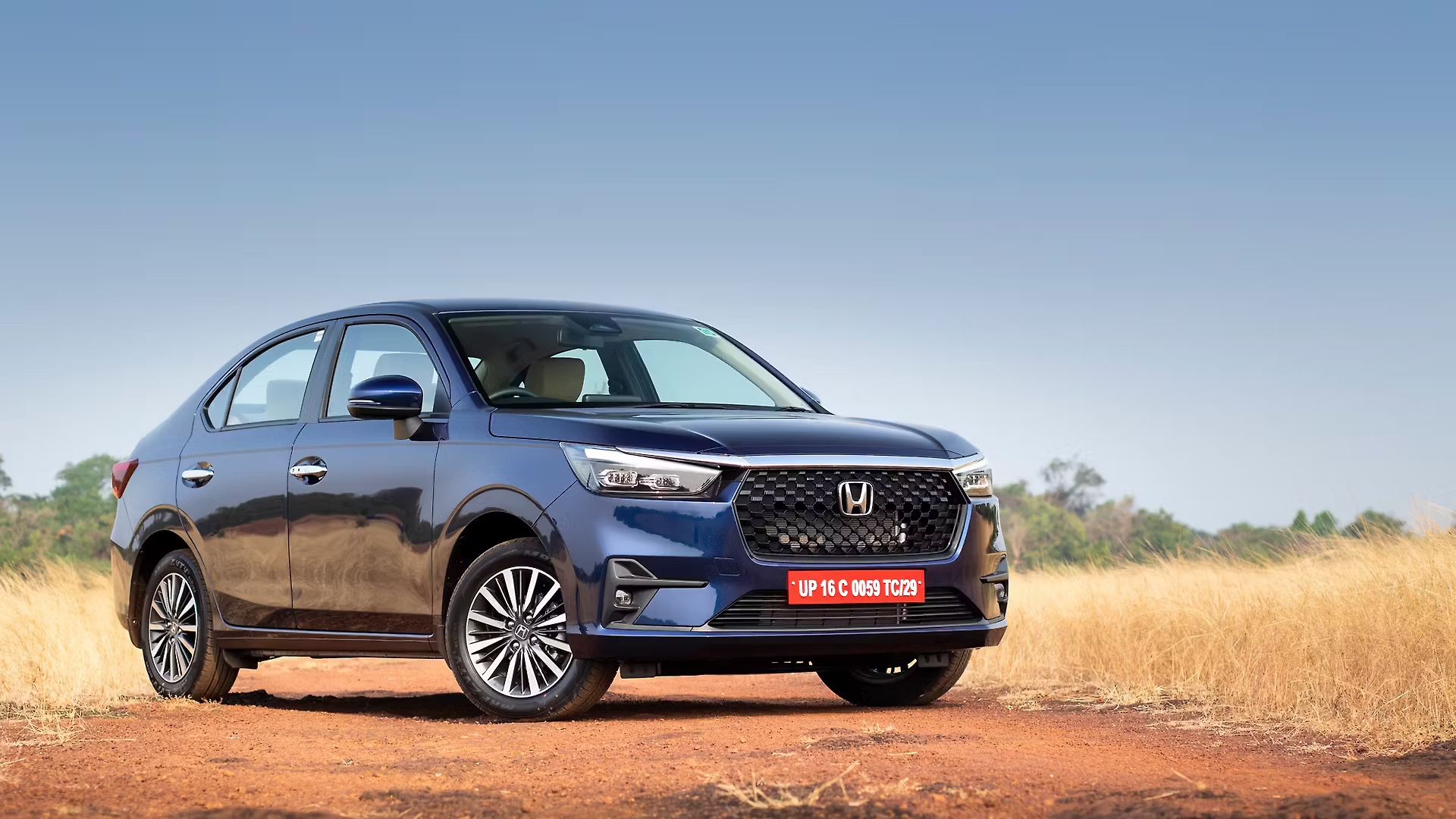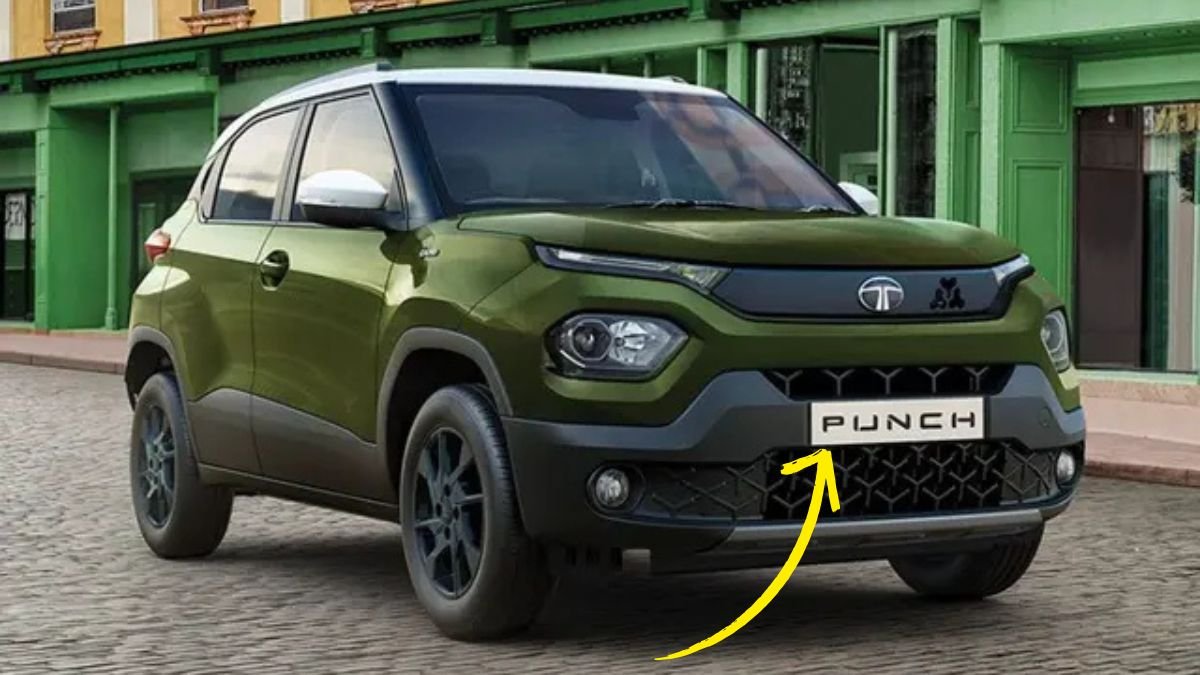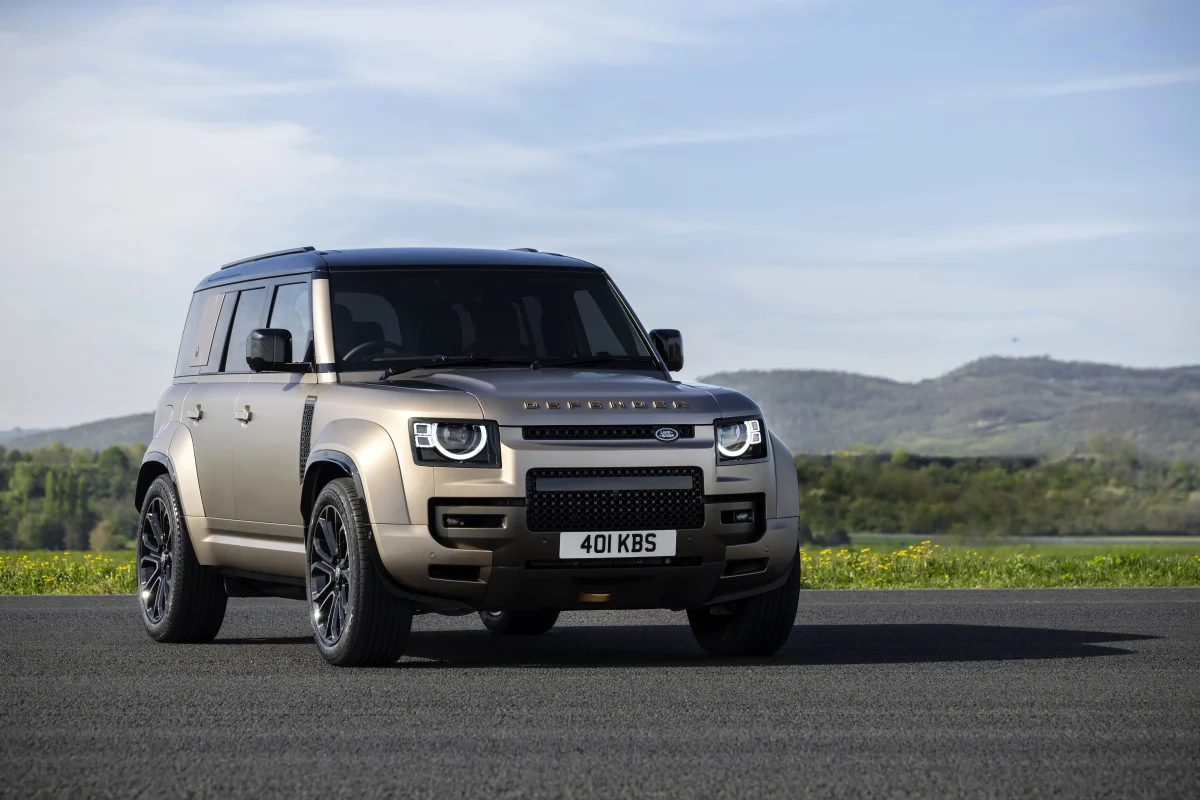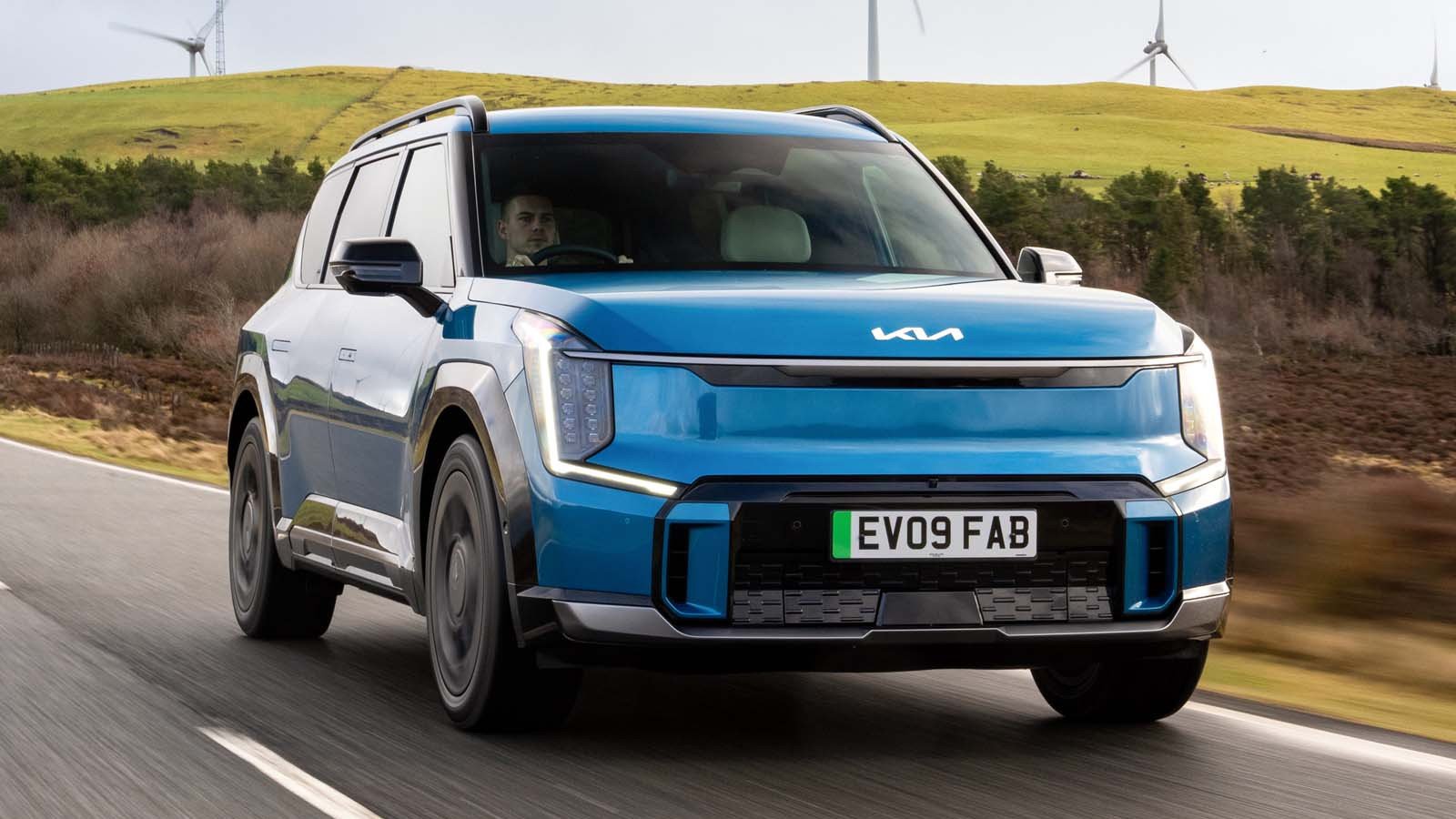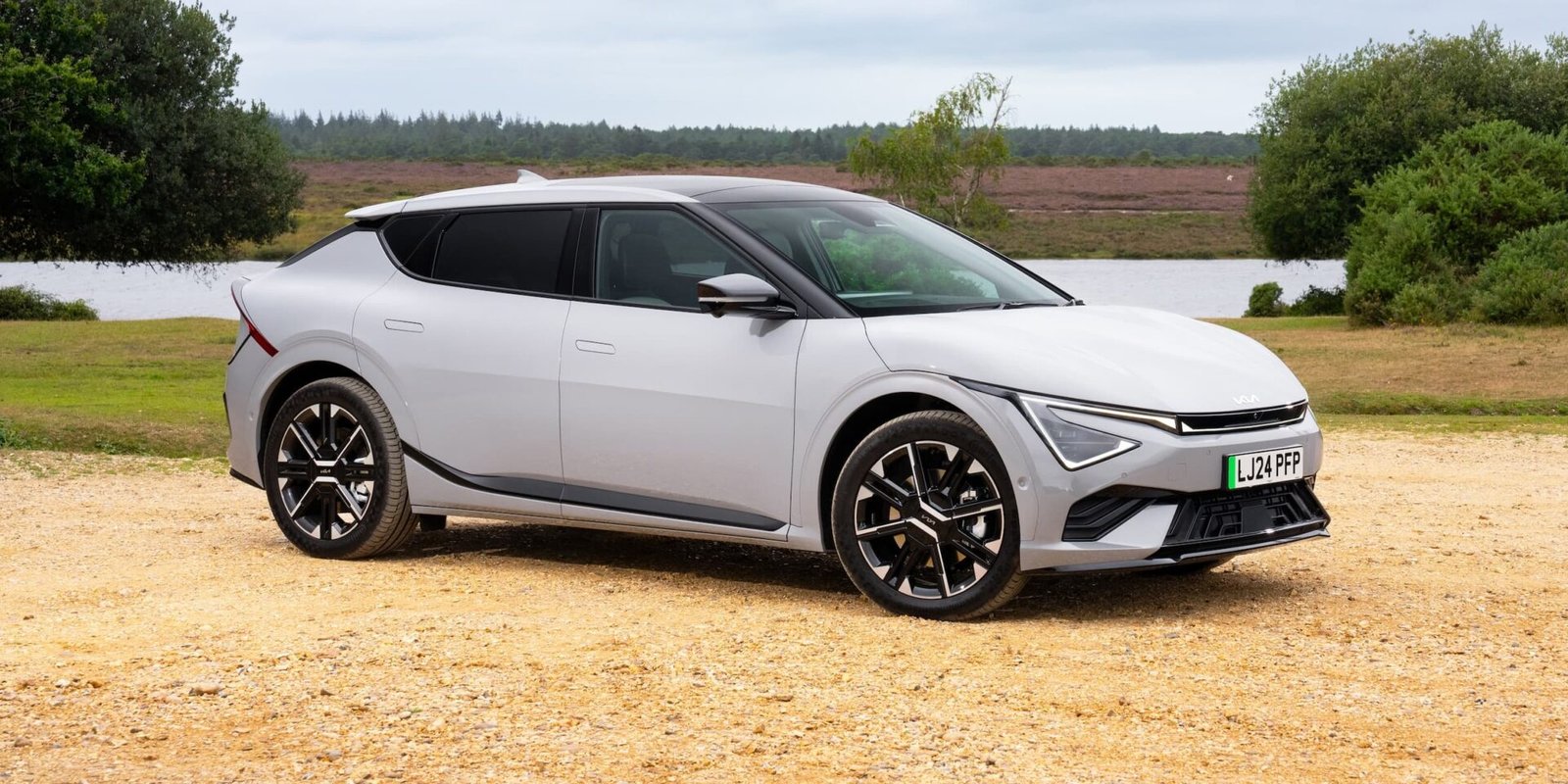The Indian SUV market is booming, and every brand wants to claim a share. Škoda has stepped into the popular sub-4-metre SUV segment with the Škoda Kylaq, a model designed and built especially for India. Compact, stylish, and loaded with features, the Kylaq is already becoming one of the most talked-about cars in its class.
This review takes a closer look at what makes the Škoda Kylaq special, where it stands against rivals, and why it is quickly gaining popularity among Indian buyers.
Quick Specs: Škoda Kylaq
| Feature | Details |
|---|---|
| Length | Under 4 metres |
| Engine Options | 1.0L TSI Petrol, 1.5L TSI Petrol |
| Power Output | 115 PS / 150 PS |
| Torque | 178 Nm / 250 Nm |
| Transmission | 6-speed MT, 6-speed AT, 7-speed DSG |
| Seating Capacity | 5 |
| Boot Space | ~350 litres |
| Safety Features | Up to 6 airbags, ESC, ABS, ISOFIX |
| Infotainment | 10-inch touchscreen with wireless Android Auto & Apple CarPlay |
| Rivals | Tata Nexon, Hyundai Venue, Kia Sonet, Maruti Brezza |
Bold and Modern Design
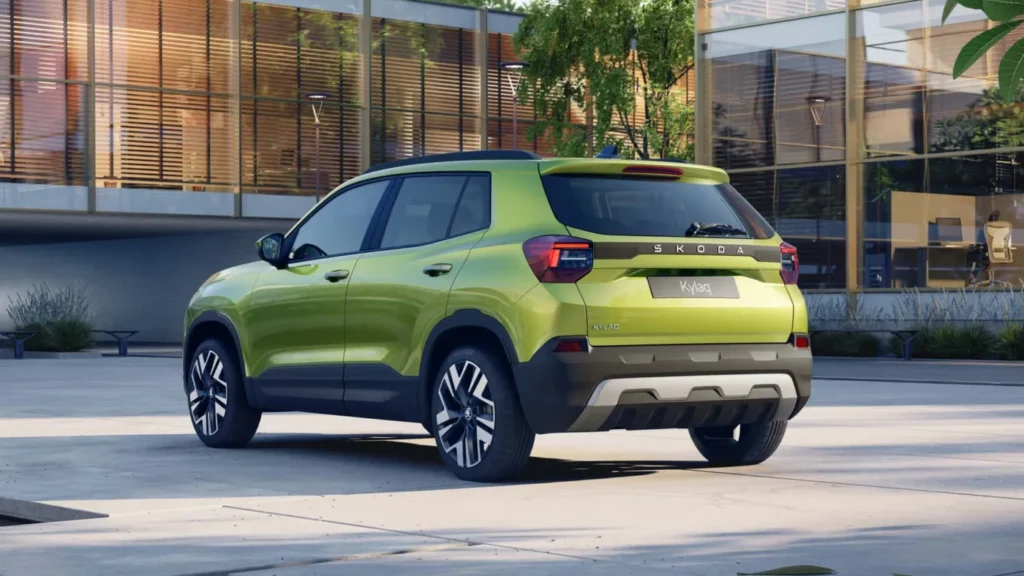
Škoda has carried its “Modern Solid” design philosophy into the Kylaq. The SUV gets sharp LED headlamps with a signature DRL pattern, a wide butterfly grille, and a muscular stance that looks more premium than most rivals.
The side profile is balanced with clean lines, flared wheel arches, and dual-tone alloy wheels. The rear has a bold Škoda badge, split LED tail-lamps, and a sporty bumper. Despite being a sub-4-metre SUV, the Kylaq manages to look bigger and more upmarket.
Color options include vibrant shades like Race Blue, Lava Red, Candy White, and a couple of dual-tone choices with contrasting black roof.
Interior Comfort and Space
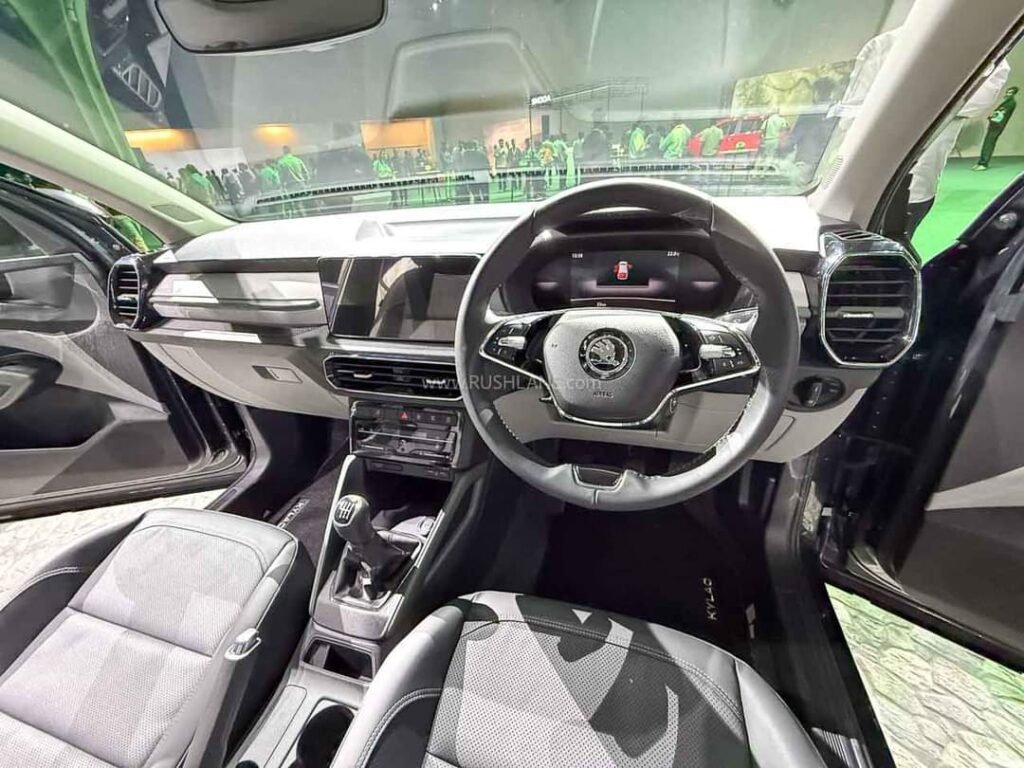
Step inside the Kylaq, and the cabin feels European. The dashboard layout is clean, with a floating touchscreen at the center, gloss black inserts, and a two-tone finish.
The seats are well-cushioned and provide good comfort for long drives. Rear legroom is competitive for the segment, though slightly tighter than the Tata Nexon and Hyundai Venue. However, the headroom is generous, thanks to the SUV’s tall design.
Škoda has also ensured a practical layout with multiple storage spaces, a decent boot size of around 350 liters, and a flat floor for rear passengers.
Also Read Honda Elevate Review – A Practical Mid-Size SUV for Indian Roads
Features and Technology
The Kylaq is well-equipped to compete in this crowded segment. Some of the standout features include:
- 10-inch touchscreen infotainment system with wireless Android Auto and Apple CarPlay
- 6-speaker sound system (with an optional premium audio upgrade)
- Digital driver’s display
- Automatic climate control
- Wireless phone charging
- Ventilated front seats
- Keyless entry and push-button start
- Rear AC vents
- LED ambient lighting
Higher variants also bring connected car technology, voice commands, and an electric sunroof.
Engine and Performance
Škoda offers the Kylaq with two petrol engine options:
- 1.0-litre TSI Petrol – Produces around 115 PS power and 178 Nm torque. Available with a 6-speed manual or 6-speed automatic gearbox.
- 1.5-litre TSI Petrol – A more powerful option producing about 150 PS and 250 Nm torque. This comes with a 6-speed manual or a 7-speed DSG automatic.
Both engines are turbocharged, offering strong acceleration and highway performance. The smaller 1.0-litre engine is fuel-efficient, while the 1.5-litre TSI is for enthusiasts who want more punch.
The ride quality is one of the best in the segment. The suspension is tuned for Indian roads, offering a comfortable drive even on rough patches. Handling is sharp, thanks to the MQB-A0-IN platform, the same one used in the Kushaq and Slavia.
Safety Features
Safety is one of Škoda’s biggest strengths. The Kylaq is built on a global platform that prioritizes structural strength. Key safety features include:
- Up to 6 airbags
- ABS with EBD
- Electronic Stability Control (ESC)
- Traction Control
- Hill Hold Assist
- ISOFIX child seat mounts
- Rear parking camera with sensors
Škoda is expected to aim for a strong safety rating in Global NCAP crash tests, just like its siblings Kushaq and Slavia, which scored 5 stars.
How It Stacks Up Against Rivals
The Kylaq competes with heavyweights like the Tata Nexon, Hyundai Venue, Kia Sonet, and Maruti Brezza. While rivals score high on affordability and wide service networks, the Kylaq stands out with its premium build quality, European styling, and powerful turbocharged engines.
However, being a Škoda, ownership costs and after-sales service may concern some buyers, though the company is actively expanding its service footprint across India.
Price and Variants
The Škoda Kylaq is priced competitively, starting around Rs. 8.5 lakh (ex-showroom) for the base variant and going up to nearly Rs. 14.5 lakh for the top-end DSG trim.
This places it in the same range as Tata Nexon and Kia Sonet, while still offering a premium feel and stronger engines.
FAQs About Škoda Kylaq
1. Is the Škoda Kylaq a good family car?
Yes. It offers good safety, a comfortable cabin, and practical features, making it suitable for small families.
2. What is the mileage of the Kylaq?
The 1.0-litre engine offers around 18-19 kmpl, while the 1.5-litre TSI delivers about 16-17 kmpl under standard conditions.
3. Does it have a diesel option?
No. The Kylaq is available only with petrol engines.
4. How safe is the Škoda Kylaq?
It is expected to perform very well in crash tests, given its MQB platform and advanced safety features.
5. Who are its main competitors in India?
Tata Nexon, Hyundai Venue, Kia Sonet, and Maruti Suzuki Brezza.
Conclusion: Should You Buy the Škoda Kylaq?
The Škoda Kylaq is a bold step into the highly competitive sub-4-metre SUV market. It combines stylish design, premium interiors, strong performance, and advanced safety in a compact package.
While rivals like Tata Nexon and Kia Sonet may offer slightly lower starting prices and wider dealer networks, the Kylaq appeals to buyers who want a premium European SUV feel without stretching the budget too much.
For Indian buyers who value style, performance, and safety, the Škoda Kylaq is easily one of the most exciting new SUVs to consider in 2025.
Author- Ayush



